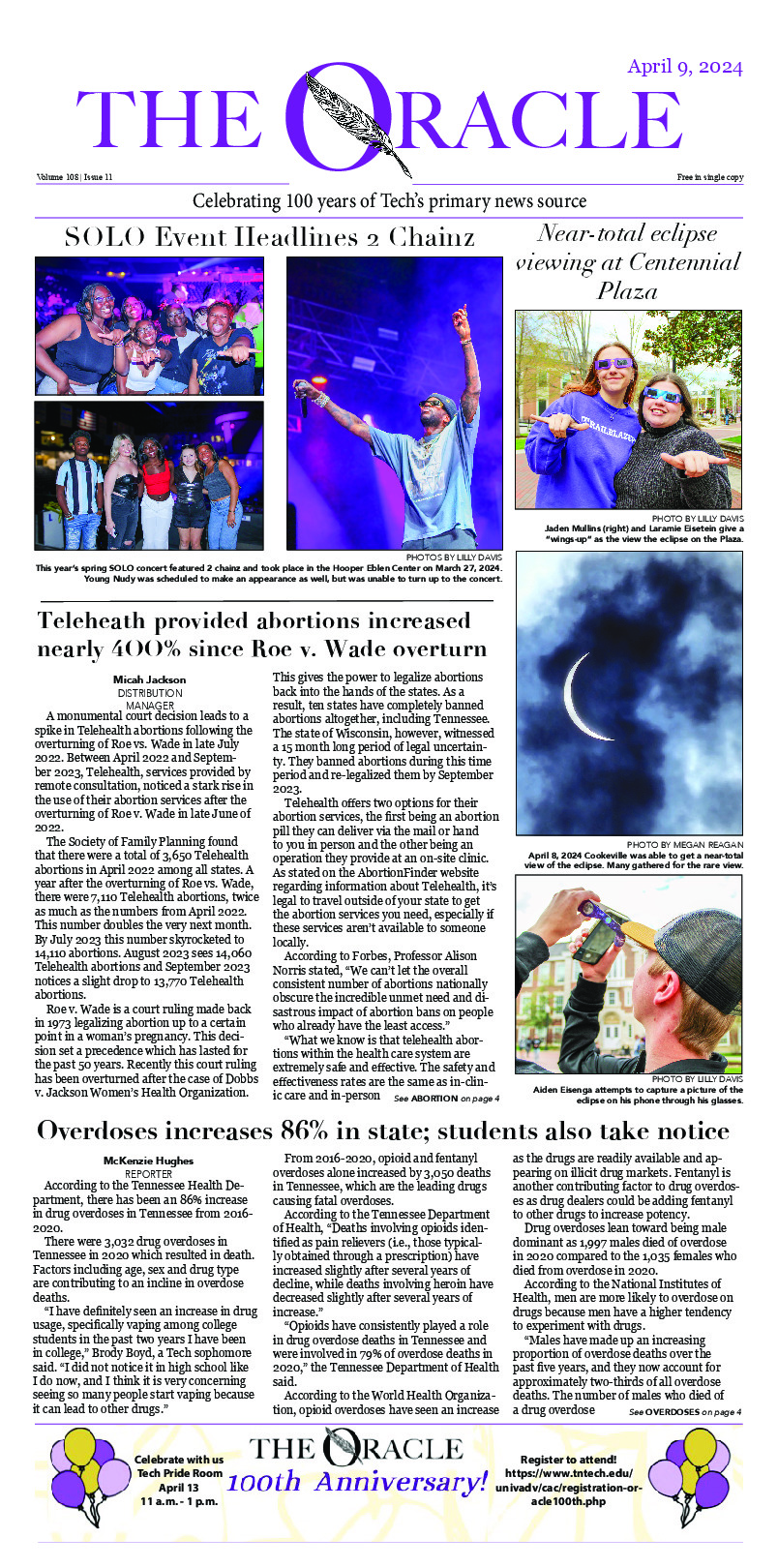
TIME FOR A CHANGE – Due to the large amount of male characters in 1967’s ‘The Jungle Book,’ director Jon Favreau decided to cast actress Scarlett Johansson, instead of an actor, as the snake Kaa.
In nearly every frame of ‘The Jungle Book,’ the old contrasts with the new. That’s not to say the two overshadow each other, but rather the opposite. The movie is at times breathtaking, yet resoundingly simple in what it sets out to achieve. By focusing on what made the original animated Disney classic work, director Jon Favreau uses the remake to instead promote an impressive showcase of CGI and visual effects. The use of CGI is crucial to the feel and atmosphere of the movie, but the stellar cast delivers smart and surprisingly powerful performances without ever showing their face. However, the tech behind ‘The Jungle Book’ allows the stunningly designed animals to both inhabit the world as bears, wolves and tigers, and create a natural flourish that doesn’t undermine the actors playing their roles. The movie may be a mix of familiar storytelling and groundbreaking CGI, but it’s a winner for Disney, who often stumbles with live-action adaptations.
Mowgli (Neel Sethi) is a boy who has been raised by wolves in a vast Indian jungle with many other species of animal, including Bagheera (Ben Kingsley), a black panther who delivered him to the wolves when he was a baby. He lives a simple boy’s life among animals until Shere Khan (Idris Elba) emerges and outs Mowgli’s father as the one who left him with a burn on his face, promising to kill Mowgli once the animals’ water truce ends. There is some debate between the wolves about Mowgli’s fate, but the boy finally decides to leave, sending him on a perilous, pretty journey through the jungle and beyond.
The film’s premise is well-known and closely follows the plot of the original, yet there are moments of surprising darkness present throughout Mowgli’s adventure. Favreau obviously wants viewers to settle in to something they know and love, but the little traces of maturity he drops end up being some of the film’s most memorable material. When Mowgli encounters Kaa (Scarlett Johansson) in a giant tree, the scene works because of a horror-style dread that may scare younger viewers, but leads to a beautiful sequence in which Kaa explains why fire (called the “Red Flower”) is so dangerous and haunting to the animals. These scenes work so well because they break up the expected but not to the point of exhaustion. This isn’t a “gritty” reboot of a classic, but rather a more mature version that still retains the magic and whimsical rhythm of the original. It stands on its own due to these scenes, all permeated with an excellent score by John Debney, who captures the film’s heart but also its darkness.
Whenever the movie delves into the expected, such as the lovable Baloo, played brilliantly by Bill Murray, it sparks a warm charm on screen, as the CGI finally begins to work its magic in both the look of the film and the performances. The subtleties that the technology can bring are justified in characters like Baloo, who makes a connection to the audience through detailed facial tics and movements, punctuated by the playfulness of Murray. Capturing these moments on an animated bear proves to be easier than doing so with first-time actor Neel Sethi (Mowgli). Even though Sethi tries his best, the interplay between he and the animals is sometimes stilted as a product of either the CGI or Sethi’s acting. It’s understandable that a first-time child actor would have issues with his performance, but in a movie that so crucially begs for great acting to create the illusion of realism, Sethi’s Mowgli simply ends up feeling awkwardly detached to the point of blending into the background and becoming an afterthought.
In the reality of trying to harness the old and new within a remake, perhaps nothing resonates with audiences more than the songs of “The Jungle Book.” Though this remake does include two songs from the animated film – “The Bare Necessities” and “I Wan’na Be Like You” – they both end up playing as truncated versions. Even though actors Bill Murray and Christopher Walken sing the renditions, respectively, there is an air of obligation to their inclusion. They’re the only songs sung, so when they do appear, both far apart from each other in the runtime, both end up feeling forced. The sense of waiting for them to appear damages the pace of the film, but composer John Debney does them both justice as they are great, albeit brief renditions of classic Disney tunes.
Once everyone is happy, “The Jungle Book” takes off and ends. Visually, the movie doesn’t leave your mind even after a few days, but the softness of the story is something that moves along nicely. The movie merges both things well with room left to be desired with its sing-a-long moments and Sethi’s misplaced acting, but it’s a fun time for fans of the original or those looking for great, subtle acting within a technological marvel. Hopefully this serves as a template for how Disney approaches their live-action remake or reboots or whatever in the future even if the heavily visual element of “The Jungle Book” doesn’t end up becoming a landmark.


